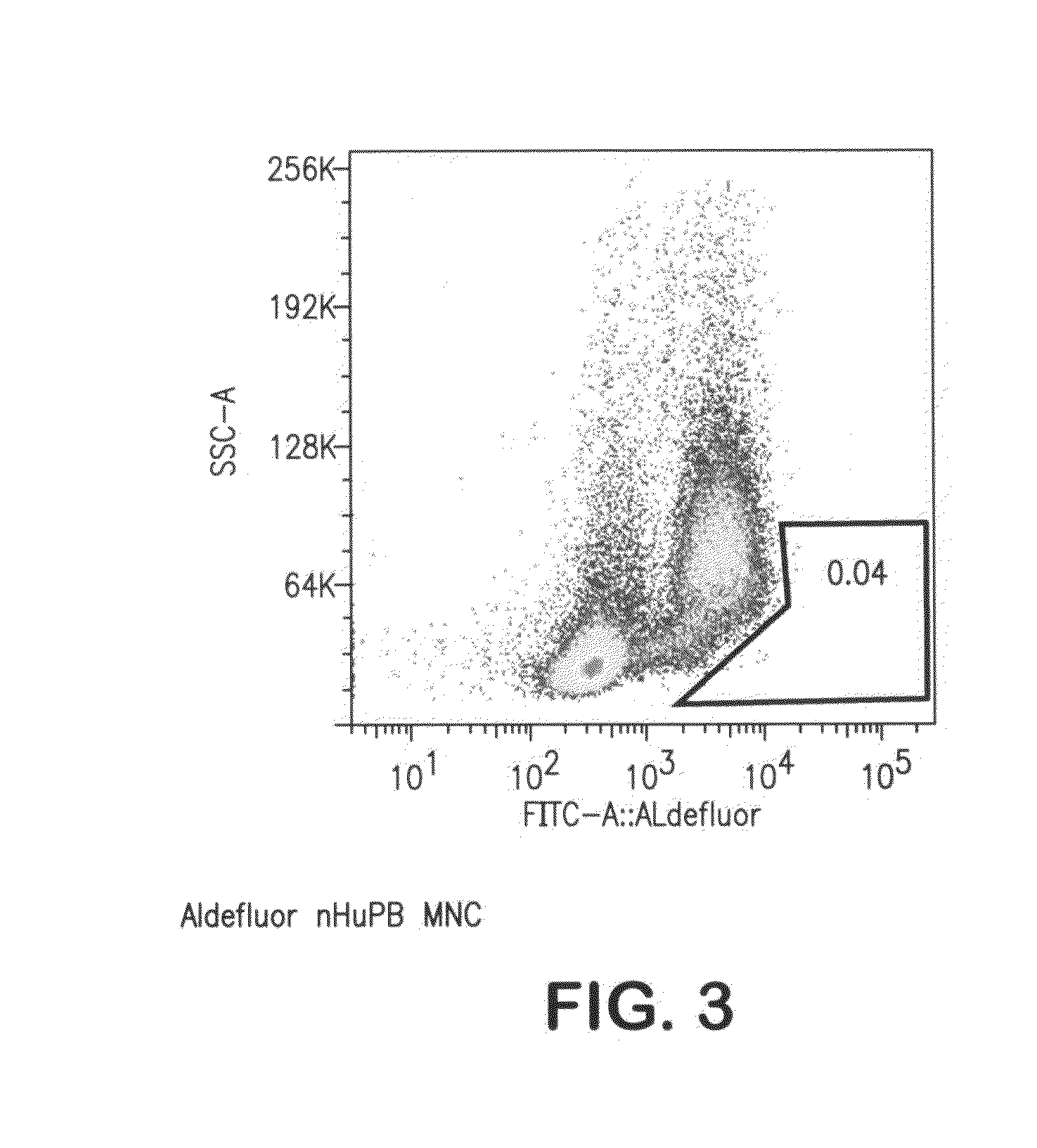Isolated monocyte populations and related therapeutic applications
a technology of isolated monocytes and therapeutic applications, applied in the field of isolated monocyte populations and related therapeutic applications, can solve the problems of significant loss of visual function, no effective treatment to slow or reverse the progression of retinal degenerative diseases, and visual loss in industrialized nations
- Summary
- Abstract
- Description
- Claims
- Application Information
AI Technical Summary
Problems solved by technology
Method used
Image
Examples
example 1
Isolating Monocyte Populations
[0073]Peripheral blood or bone marrow can be used as a source material for the procedures described here. As an example, we have selected peripheral blood as a cell source due to the relative abundance of monocytes and the ease / safety of collection versus bone marrow. For therapeutic use it is desirable to have cells that are free of any bound compounds related to selection. With this goal in mind, we have conceived and put into practice methods that distinguish monocytes from other mononuclear cells (e.g. lymphocytes) based only on physical properties such as size, granularity and density. The first method we have developed is based on FACS for sensitively separating monocytes from lymphocytes based on differences in cell size and granularity, without the use of antibodies. Results showing monocyte populations isolated with this method is indicated in FIG. 1A. Prior to FACS based separation, the erythrocytes and granulocytes present in whole blood are ...
example 2
Treating Ocular Vascular Disorder with Isolated Monocyte Populations
[0078]A murine model of oxygen-induced retinopathy was employed to examine therapeutic activities of the monocyte populations isolated with the methods described herein. Mice with oxygen-induced retinopathy were generated as described in Ritter et al., J. Clin. Invest. 116:3266-76, 2006. Specifically, oxygen-induced retinopathy was induced in C57BL / 6J mice according to the protocol described by Smith et al., Invest. Ophthalmol. Vis. Sci. 35:101-111, 1994. For comparison, BALB / cByJ mice were also subjected to the same conditions. Briefly, P7 pups and their mothers were transferred from room air to an environment of 75% oxygen for 5 days and afterward returned to room air. The hyperoxic environment was created and maintained using a chamber from BioSpherix. Under these conditions, large hypovascular areas formed in the central retina during hyperoxia in C57BL / 6J mice, and abnormal preretinal neovascularization occurre...
example 3
Other properties and activities of isolated monocyte populations
[0080]To demonstrate that the cells we isolated are distinct from other known cell populations in clinical use or development, we have labeled peripheral blood samples for the expression of aldehyde dehydrogenase which, when expressed at high levels (ALDHbr), identifies CD34+ cells, CD133+ cells, kit+ cells, Lineage-antigen negative (Lin−) cells. We found essentially no such labeling in peripheral blood samples (FIG. 3), fitting with the idea that stem cells are expected to be exceedingly rare in unmobilized peripheral blood.
[0081]CD34 is a marker of hematopoietic stem cells and has been used to select cells for various clinical applications. We have found that such cells might comprise or adversely affect the outcome of the therapeutic applications described herein. Specifically, we injected mouse embryonic and human mesenchymal stem cells (which, like CD34+ stem cells, are undifferentiated cells) intravitreally in ord...
PUM
| Property | Measurement | Unit |
|---|---|---|
| concentration | aaaaa | aaaaa |
| concentration | aaaaa | aaaaa |
| concentration | aaaaa | aaaaa |
Abstract
Description
Claims
Application Information
 Login to View More
Login to View More - R&D
- Intellectual Property
- Life Sciences
- Materials
- Tech Scout
- Unparalleled Data Quality
- Higher Quality Content
- 60% Fewer Hallucinations
Browse by: Latest US Patents, China's latest patents, Technical Efficacy Thesaurus, Application Domain, Technology Topic, Popular Technical Reports.
© 2025 PatSnap. All rights reserved.Legal|Privacy policy|Modern Slavery Act Transparency Statement|Sitemap|About US| Contact US: help@patsnap.com



